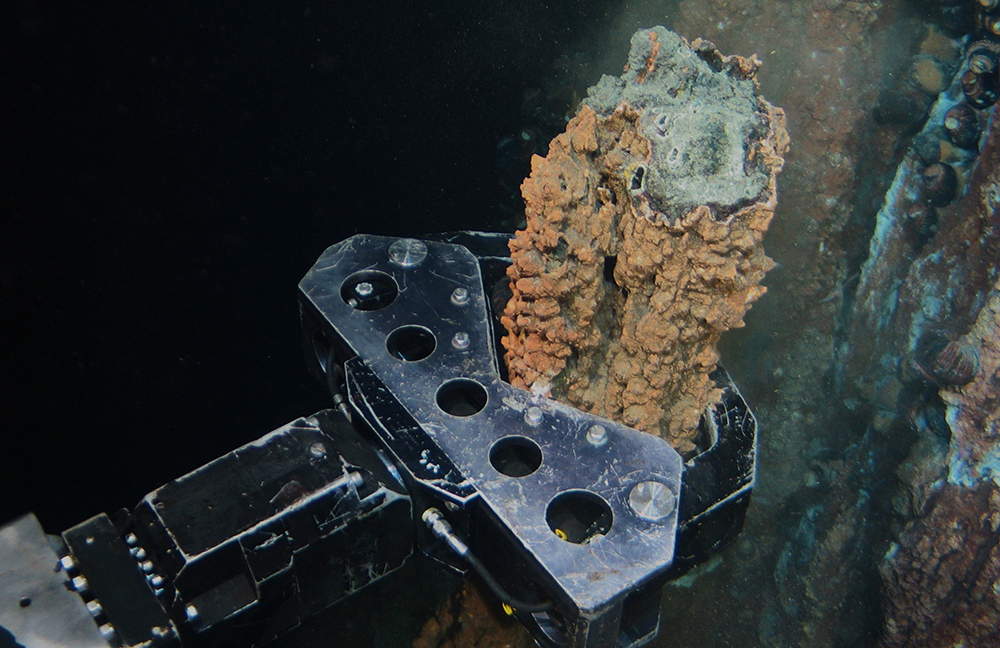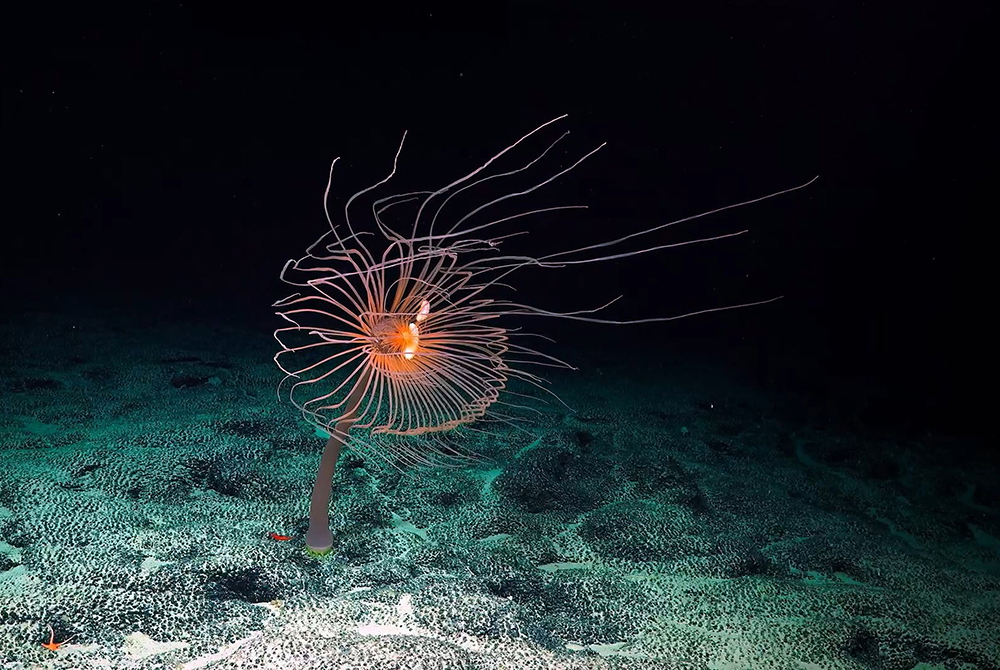Actor Jason Momoa narrates (and executive produces) “Deep Rising,” an ocean conservation documentary playing at Sundance Film Festival. Particularly, the film is about the deep ocean… a distinction I didn’t realize held the importance it does until viewing this film. The opening is majestic; jellyfish and deep sea creatures jettison through dark water, glowing, as Momoa narrates how coastal areas are important to us — the parts we can see — but the deep ocean escapes our attention. “Deep Rising” throws a lot of information at the viewer. You’ll understand how vital the deep ocean is, and how, in fact, it may have been where life on Earth originated. However, with this influx of information comes some confusing moments. The documentary, while rich with information, fails to point us in a solid direction, though it does single out some culprits. But sometimes identifying the problem is the first step.
“Deep Rising” juxtaposes National Geographic-worthy footage of the deep ocean with Gerard Barron, the chairman and CEO of DeepGreen, an ocean mining company in the business of harvesting nodules on the ocean floor to turn them into battery materials. Electric cars and lithium ion batteries are the supposed recipient, as the future is frequently repeated as “going green.” The doc spends a lot of time with Barron, as he meets with hedge fund investors and other funding sources. Whereas mining operations such as Big Oil dig into the ocean floor, DeepGreen practices a harm reduction model of simply picking nodules off the surface. It all sounds good, until the film’s director, Matthieu Rytz, digs a little deeper.
The Ocean Deep and its Importance
The best parts of the doc, for me, are the ones featuring Momoa’s narration, and scientific information added by Dr. Sandor Mulsow, a professor of Marine Biology. Momoa’s passion for the ocean is well-documented. And despite his star power, he narrates “Deep Rising” quietly and with deference. He walks us through a history of ocean conservation, specifically the post World War II ‘Law of the Sea Conference,’ and the later-established International Sea Bed Authority (which Dr. Mulsow once served on), held in Kingston, Jamaica. The goal of these conferences and agencies was to establish that the deep ocean belonged to the world entire, as it affects everyone. This conference measure passed with a 98% vote. The cynical part of me was not shocked to learn the United States abstained to vote, and that President Regan later vetoed this, citing a U.S. need for “materials and defense.”
Mulsow brings the meat of the documentary, the thesis if you will, by explaining how the deep ocean works. For instance, did you know that time moves much more slowly in the deep? That the same nodules DeepGreen wants to harvest grow by mere centimeters per million years? The point, as Mulsow sees it, is that we do not yet know the ecological function of these nodules, or the bed they sit on. Mulsow takes some time explaining how they filter debris from above, assisting plankton production that feed certain whales… and if one organism suffers because of harvesting, then they all might. In fact, one microbe found on the ocean floor was aged at 100 million years. That deep sea mining could eradicate life like that resonates, seeing as this one creature literally shared the Earth with the dinosaurs.
Momoa Narrates a Complex Issue, but the Doc Holds Back

The documentary digs deeper, of course, in the way that undeveloped countries suffer at the hands of mining expeditions, both terrestrial and below sea. There’s some takedowns of exploitation, the most on-the-nose a recorded conversation with Elon Musk offering bonuses to whatever mining companies can mine more nickel for him (it’s used in Tesla batteries). But Momoa walks us through the harm here: yes, electric cars are good — they pollute less. But the mass amounts of coal burned to harvest the nickel to power the batteries causes devastating and possibly irreparable harm to the environment. Is that justified? Likewise is mining the ocean — and disrupting millions of years of symbiosis — justified to power electric cars while less developed countries don’t have this luxury and don’t benefit from this? These are the hard questions “Deep Rising” asks.
Where the documentary suffers somewhat is its cautious approach, for lack of a better word. Momoa narrates, so I don’t really expect him to take a hard stance. But he does in subtle ways. He uses words like extinction and exploitation to show what side he lies on. More explicit call-outs come from Dr. Mulsow, who talks about Capitalism and how mining for elements that are less than 1% of the Earth’s crust — instead of hydrogen, which is “everywhere” as he puts it — forms monopolies to rake in profits. But by the part of the documentary, it seems too-little-too-late. And as “Deep Rising” ends with Gerard Barron holding a nodule, talking about how the future is metallic — broadcast through Times Square in New York City, the tone feels somewhat celebratory and triumphant, albeit satirically so — and loses some of its effect.
A Solid Documentary, but Imperfect
“Deep Rising” is solid, but not perfect. Rytz, Momoa, and company are clearly calling out deep sea mining. However I feel the doc holds back on a full frontal attack on the practice, soft-peddling it with information, hoping to convert people to their cause — though I feel that it will appeal most heavily to those who already understand and value climate change as a threat. The ocean cinematography is exquisite, the creatures shown majestic, and Jason Momoa, with his stolid, calm, ASMR-like voice propels the narrative along. I wish it ended with a bigger call to action; but, like Occupy Wall Street and similar protests, pointing out the problem is the first step. In that, “Deep Rising” is rich in the what. Where we go from here is up to us.
“Deep Rising” is currently playing at the Sundance Film Festival. The festival goes from January 19 – January 29. Join us for continual coverage.



